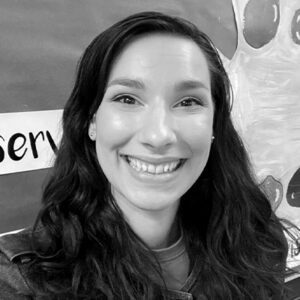Are there extra bags of clay gathering dust in your closet? Are you not sure where to start because clay seems intimidating? Let’s crush those questions and talk about why we love clay! Often overlooked or underutilized, clay is an essential and versatile material in almost every art room. Keep reading for some of the many reasons why art teachers and students love clay. For a deeper dive to conquer any clay fears, enroll in the course, Studio: Ceramics. Experiment and explore clay techniques and processes with other art teachers just like you! Connect with an admissions counselor today.
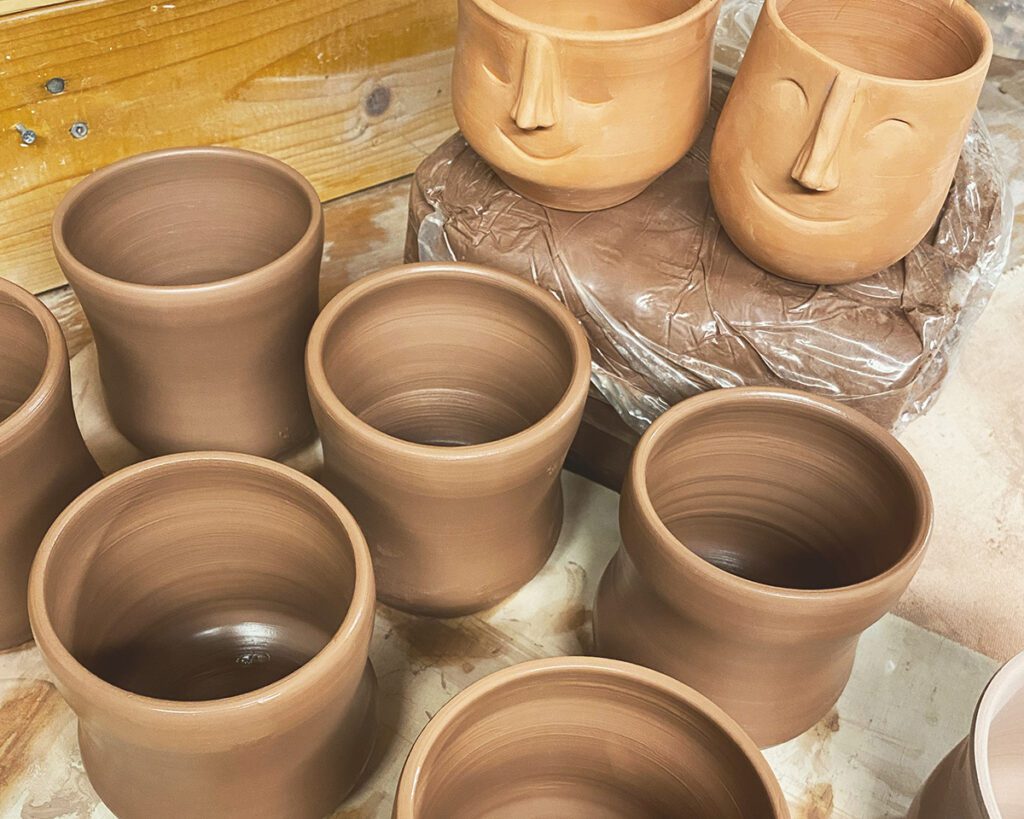
Now, let’s delve into nine reasons why we love clay!
For a ton of tips to streamline clay into an efficient and super fun Clay Week, watch Sarah Krajewski’s DITL of an Art Teacher below.
1. It is versatile.
Clay offers incredible versatility and provides artists with endless creative possibilities. From hand-building to wheel-throwing, students can explore various techniques and processes to shape clay into unique pieces. Whether they’re crafting functional pottery, sculpting intricate figures, or experimenting with abstract designs, clay encourages students to express themselves in diverse ways.
Here are three ways clay is versatile in the art room:
- Grade Level
No matter the grade level, there is always a perfect clay project. Clay projects can also evolve as students get older. Younger students enjoy hand-building techniques like pinch pots and coil building to foster fine motor skills and imaginative play. Older students can do more complex techniques like wheel-throwing, slab construction, or mold-making. These activities refine fine and gross motor skills and offer opportunities to practice time management. - Skill Level
Clay projects are inclusive and suitable for varying skill levels. Beginners can start by playing with clay or building simple forms. Experienced students can explore advanced techniques and experimental glazing processes and make connections with other content areas and career fields. - Time Frame
Whatever time you have to work with, you can customize a clay project to fit. Short projects, like small bowls or tiles, work well for quick introductions. Long-term projects that extend over several weeks, such as busts or wheel-thrown pottery sets, offer students an immersive experience to develop ideas and craftsmanship.
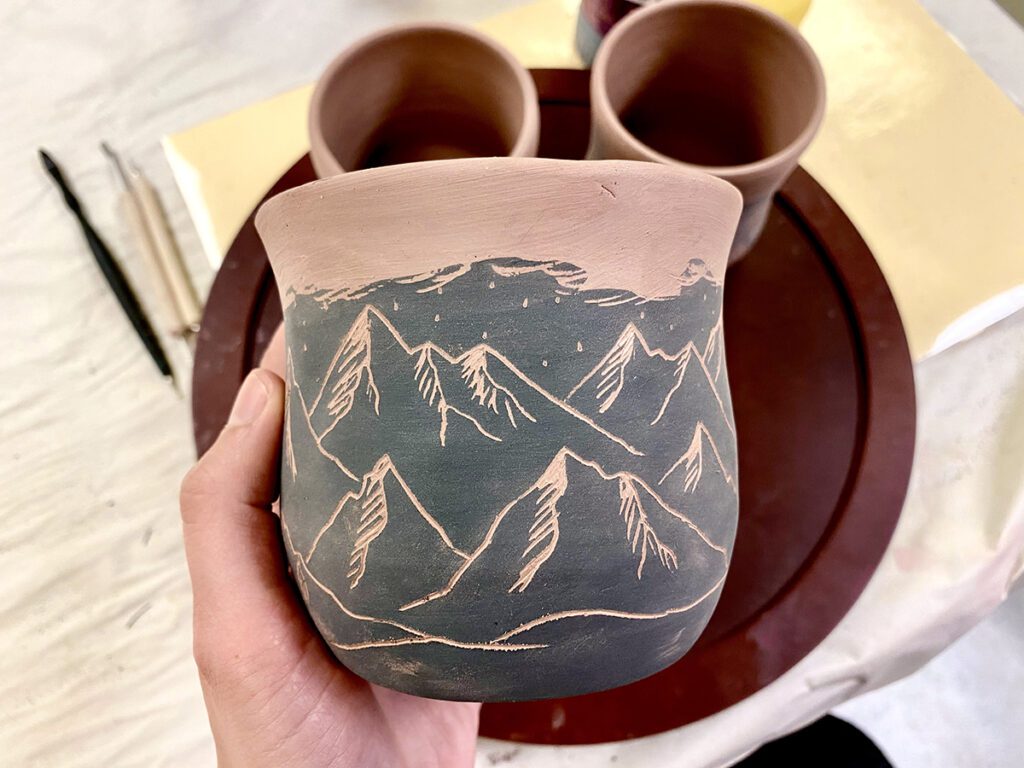
2. It works with or without a kiln.
There are several ways to do clay with or without a kiln. Access to a kiln will vary depending on your district and building. If you don’t have a kiln in your building but another teacher in your district does, see if you can collaborate in some way. If you need a refresher on how to use your kiln, check out the Pack, Critical Kiln Safety, in PRO Learning. If you don’t have a kiln, there are still options to bring clay experiences to your students!
Here are several clay options to integrate into the curriculum:
- Stoneware or Earthenware: Both are kiln-fired, durable, and ideal for intricate sculptures and pottery.
- Air Dry Clay: You don’t need a kiln and it’s perfect for small sculptures.
- DIY Cold Porcelain: A homemade and budget-friendly clay that air-dries to a porcelain-like finish.
- Paper Clay: This combines traditional clay with paper fibers for lighter projects fired in the kiln.
- Polymer Clay: Great for jewelry, figurines, and mixed media, it requires a regular oven or toaster oven.
- Salt Dough: Uses everyday ingredients like flour, salt, and water and is good for simple and decorative creations.
3. It is a tactile and sensory experience.
When students work with clay, they experience something truly special—a hands-on, sensory journey. As they touch and shape the clay, they connect with their artwork in a deeper way. This improves their fine motor skills and, combined with the sounds and smell of clay, allows for an immersive experience. Students can express and process emotions on the clay, making it a therapeutic stress-relieving activity. While all students love clay, it can be a special escape for students with disabilities. See how a student with cerebral palsy uses the pottery wheel in the video below!
4. It includes a variety of techniques.
Working with clay offers a diverse range of techniques for all skill levels. If you feel like a beginner yourself, start small with your own comfort level and work your way up to more advanced techniques.
Here is a list of common techniques to demonstrate to your students:
- Slip and Score
- Pinch
- Slab
- Coil
- Carving
- Wheel Throwing
- Surface Decoration
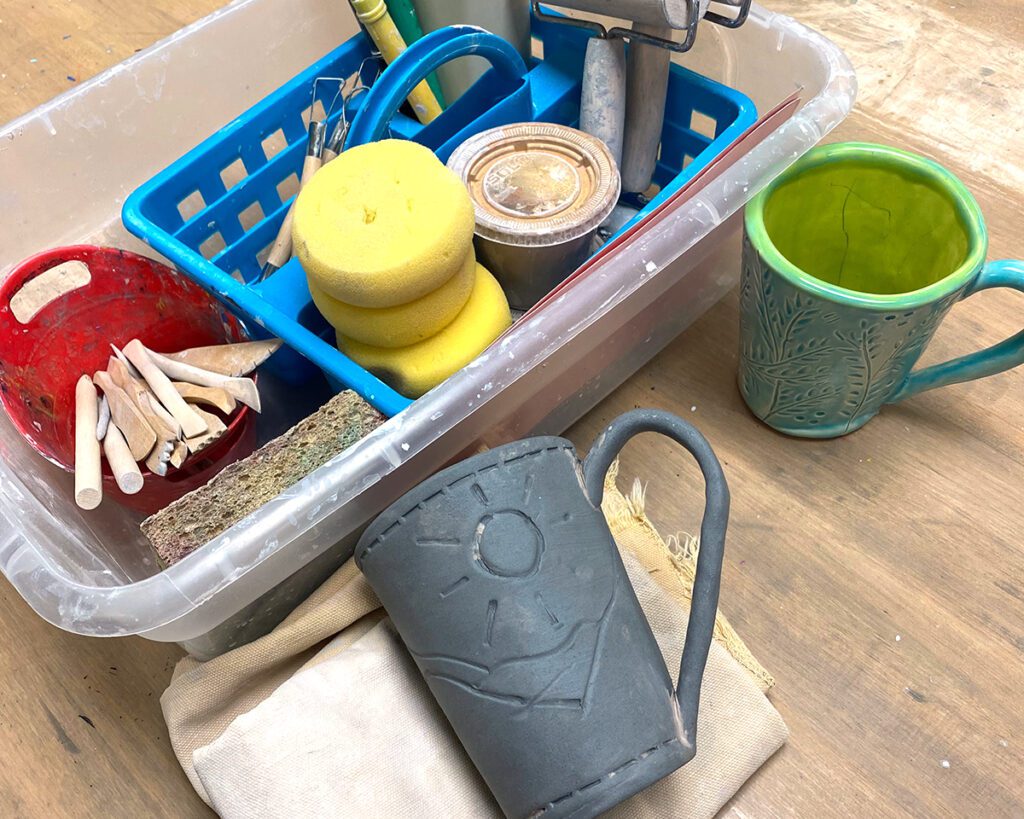
5. It encourages three-dimensional thinking.
Students have a unique opportunity to think in a different way when they create with clay. With ceramics, students learn in three-dimensional creation rather than on flat paper or canvas. Students need to consider the angles, space, and size of their pieces. As students sculpt and manipulate clay, they enhance spatial awareness, hand-eye coordination, and a sense of form and volume. Plus, it makes students’ two-dimensional work stronger!
6. It can take on many textures for surface decoration.
Continue the sensory experience with surface decoration! Decorating clay offers so many possibilities for capturing interesting textures and adding depth. Students can explore found objects like leaves, crumpled aluminum foil, fabric scraps, or bubble wrap to imprint textures. Use carving tools to make intricate patterns and designs and introduce relief work. Textured rollers and stamps offer a quick and easy way to add repetitive patterns.
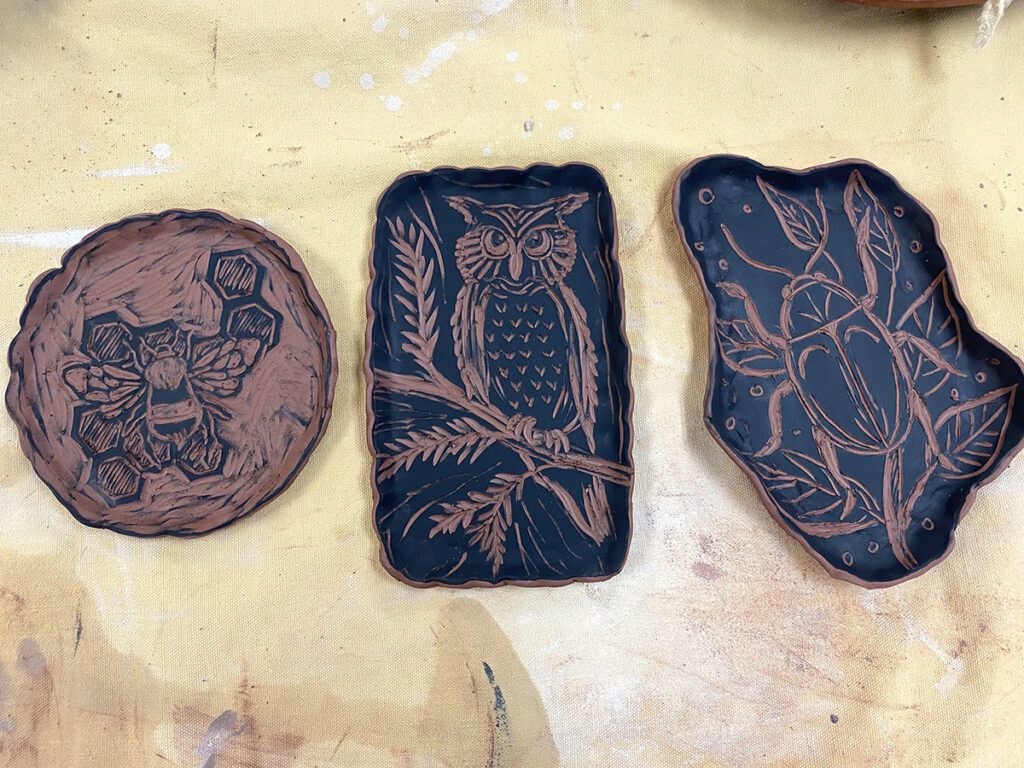
7. It is cost-effective.
Clay is a cost-effective and sustainable medium. There are many types of clay at various price points. Additionally, reconstitute dry stoneware, earthenware, and porcelain to repurpose and reuse it. This reduces waste and promotes eco-friendly art practices. If you still think clay is too expensive because of glazes, keep reading. (Spoiler alert: You don’t have to get glazes!)
8. It teaches patience and process.
You may have noticed that patience is something students need more of right now. While technology is a helpful tool, it can also contribute to consuming more than creating and increasing instant gratification. We love clay as a medium to instill patience and the value of the artistic process. Clay needs to change stages to do certain techniques and dry completely before firing. These waiting periods encourage students to embrace the creative process rather than rushing to complete a project.
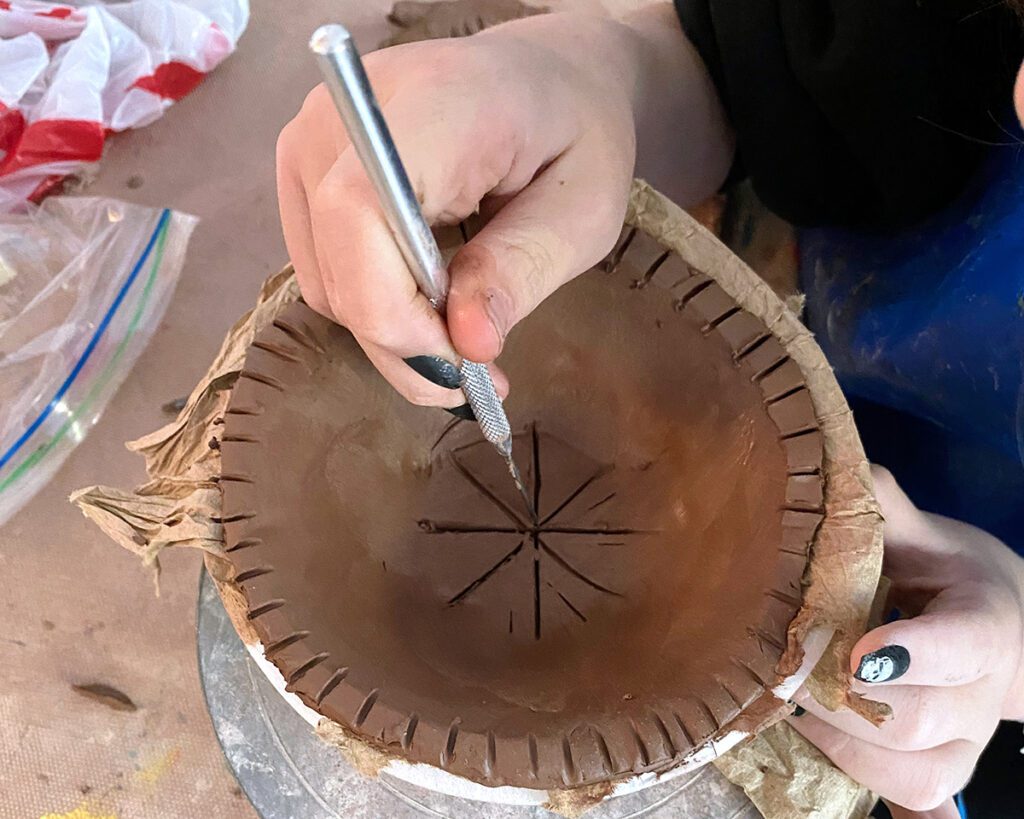
9. It boasts a range of expressive finishes.
Forget the notion that glazing is your only option for finishing clay projects. Did you know the world of clay is bursting with choices? Don’t let budget constraints or limited firing time hold you back. Embrace alternative finishes to add flair to clay creations.
Here are other options to finish a ceramic piece:
- Liquid watercolors
- Decoupage
- Permanent marker
- Tempera cakes
- Oil pastel and watered-down tempera
- Metallic paint
- Glitter paint
- Spray paint
- Puffy paint
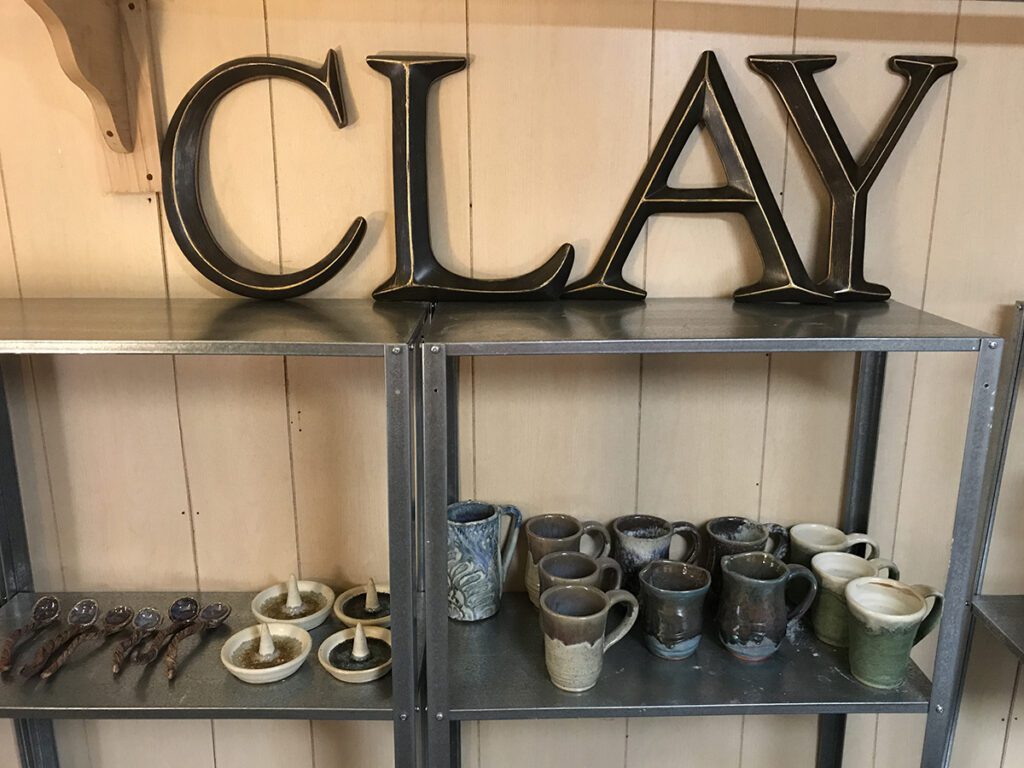
The potential that clay has in the art classroom for our artists is undeniable. Begin with simple hand-building projects such as pinch pots. This will allow students to experience the tactile joy of working with clay. Introduce one or two basic techniques to build confidence. Then, gradually expand your clay curriculum to include more complex methods like wheel-throwing or surface decoration. As students engage in this hands-on and versatile medium, they will develop essential artistic skills, foster creativity, and have fun! Fall in love with all things clay and see what all the hype is about yourself—roll up your sleeves and dig your hands into a bucket of slip and cut yourself a block of clay!
What do you love most about clay?
How do you need support with incorporating clay into your classroom and curriculum?
Magazine articles and podcasts are opinions of professional education contributors and do not necessarily represent the position of the Art of Education University (AOEU) or its academic offerings. Contributors use terms in the way they are most often talked about in the scope of their educational experiences.

